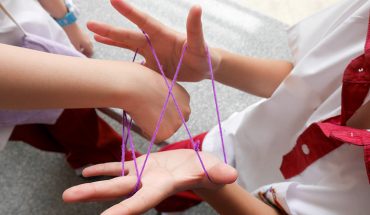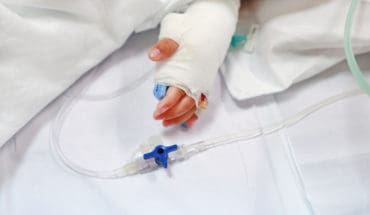Life-changing bionic limb technology is now being developed in Australia, with internationally renowned prosthesis expert Professor Max Ortiz Catalan joining the Bionics Institute in Melbourne.
It is estimated more than 57 million people worldwide are living with limb amputation due to traumatic causes1.
Limb loss reduces a person’s ability to perform everyday tasks and has a considerable impact on quality of life.
Current prosthetic limb options are difficult for a patient to control and can cause pain and discomfort.
As a result, many patients choose to limit the time they wear a prosthesis, or to not use one at all.
Professor Max Ortiz Catalan’s new research program at the Bionics Institute aims to revolutionise how prosthetic limbs function and feel by connecting them to the human body.
“The prosthetic limbs currently available don’t provide the wearer with sensory feedback, so patients can’t tell if they’re touching something or holding an object,” Professor Ortiz Catalan explained.
“My team and I are using surgical and engineering techniques to connect a patient’s prosthesis directly to their bones, nerves and muscles; creating a neuromusculoskeletal human-machine interface.”
This interface supports brain signals to travel through the nerves and muscles safely and reliably to the bionic limb, giving the patient movement control and sensory awareness.
A strong and comfortable mechanical connection to the prosthesis is created using a technique called osseointegration – where a titanium implant is inserted into the patient’s bone.
Bone cells grow tightly around the implant that the bionic limb can be directly attached to the skeleton.
In addition to skeletal attachment, Professor Ortiz Catalan has been reengineering osseointegrated implants to also allow for bidirectional communication between the human nervous system and the prosthetic limb, a sort of USB port to the human body.
Professor Ortiz Catalan said: “This revolutionary approach to integrating a bionic limb with the body means that a patient can reliably move the bionic limb using their thoughts.
“For example, a patient can control a robotic hand as they would move their own biological hand – every finger on it.”
Sensors in the robotic hand also make for a more intuitive experience, enabling the patient to detect contact with the prosthesis, know what position the hand is in, and the amount of force applied to objects during grasping.
All vital functions for a prosthesis to be practical in everyday life.
Bionics Institute CEO Mr Robert Klupacs says Professor Ortiz Catalan’s appointment at the Bionics Institute marks a new chapter in
Australian med tech innovation and has the potential to improve healthcare outcomes worldwide.
He said: “We are delighted to welcome Professor Max Ortiz Catalan to the Bionics Institute.
“His cutting-edge research has the power to redefine the possibilities of bionic technologies, providing solutions that restore function and independence for those who have lost a limb through amputation or congenital limb malformation.”
Professor Ortiz Catalan is excited by the opportunity to work closely with Bionics Institute researchers, engineers and scientists to advance medical devices and transform lives.
“I am honoured to be part of the Bionics Institute, a research institute with a reputation of excellence in translating research outcomes into practical applications, and a focus on solving medical challenges with innovative technologies,” Professor Ortiz Catalan concluded.
1McDonald CL, Westcott-McCoy S, Weaver MR, Haagsma J, Kartin D. Global prevalence of traumatic non-fatal limb amputation. Prosthet Orthot Int. 2021 Apr 1;45(2):105-114. doi: 10.1177/0309364620972258. PMID: 33274665.
- Combination of drugs could prevent thousands of heart attacks - 21st April 2025
- UQ Study Links Poor Teen Diets to Heavy Social Media Use - 21st April 2025
- Gut microbiome could delay onset of type 1 diabetes - 3rd April 2025






